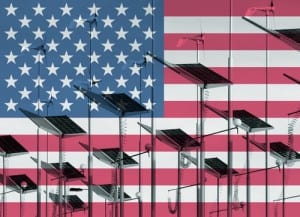The results of the 2016 US Presidential and Senate Elections are a worst-case scenario for the U.S. solar industry, and no federal support is safe.

The U.S. solar industry has seen most of its growth in an environment where we at the very least had one benefactor in the federal government, where the country had the support of President Obama. That is over now.
In a narrow race, the United States has elected a man who knows little about energy, who surrounds himself with people who likewise know little, and who appeals to an ignorant base in part by repeating myths about solar and wind. He is not even a throwback to the 20th century, but someone who has built a regressive fantasy based on the worst parts of that century.
This alone would be a significant problem for the solar industry (and the nation); however, equally problematic is that the Republican Party has retained control of the U.S. Senate, meaning that Mitch McConnell (R-Kentucky) remains as Majority Leader and Lisa Murkowski (R-Alaska) will remain Chair of Energy and Natural Resources Committee.
This is not good news. It also means that the Republicans now control every one of the bodies needed to make and pass legislation. And while there are Republican solar advocates in Arizona and Georgia, make no mistake that the mainstream of the Republican Party is utterly hostile to both environmental concerns and renewable energy. With such control there is no environmental law that cannot be undone, and no federal policy support for solar that is safe.
Trump will not be able to bring back coal in a meaningful way as he has promised, but he can significantly thwart solar if he and the Republican government decide to pre-emptively end the 30% solar Investment Tax Credit (ITC), which was recently extended to 2020.
Additionally, the federal research and development support for solar under the Department of Energy’s SunShot Initiative also has a dubious future from a man who thinks that solar panels have a 10-year lifespan and a 28-year payback period (switch these figures and it is closer to reality).
If there is a saving grace, it is that other than the ITC the most important policies for solar are at the state and not the national level. Trump’s presidency will not undo the renewable portfolio standards in California or New York, or the implementation of PURPA in North Carolina and Utah.
The solar industry will survive this, as the raw economics of solar will continue to pave the way for growth. The boom in the market in Texas is proof of this, as Texas’ grid operator expects to install 13 GW of solar PV by 2030 – without any real subsidies at the state level.
But at the federal level the next four years will be ugly, and there could well be real damage to the solar industry.
Source: PV Magazine. Reproduced with permission.










